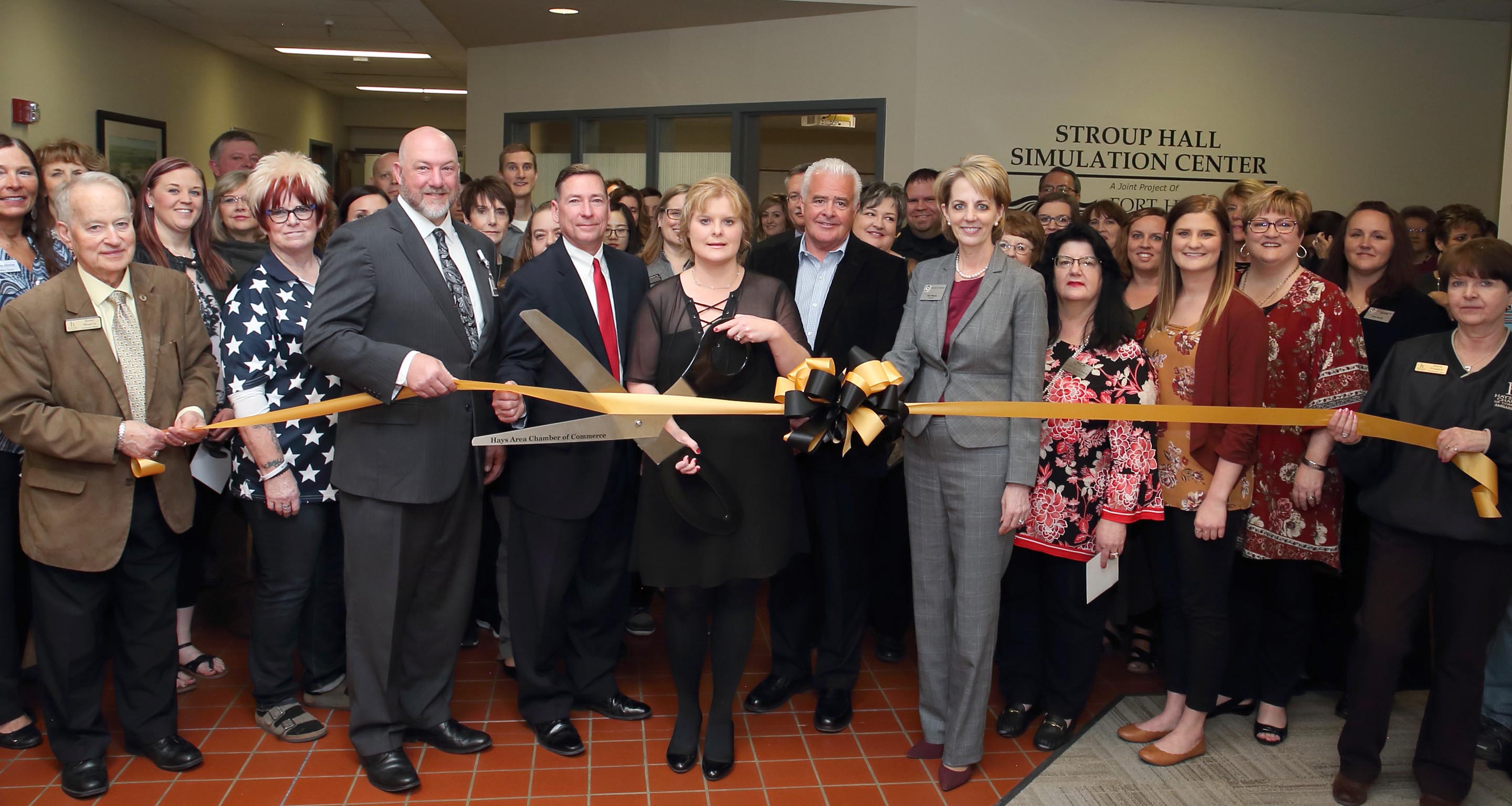By UNIVERSITY RELATIONS
Approximately 200 people turned out Monday for an open house and ribbon-cutting at Stroup Hall on the Fort Hays State University campus to see new lab spaces and equipment in a rebuilt section of the building.
A $250,000 grant from the Dane G. Hansen Foundation funded the renovation, which was a partnership between the FHSU Department of Nursing and HaysMed.
“Today, we celebrate the opening of the Stroup Hall Simulation Center made possible by our partnership with HaysMed, part of the University of Kansas Health System, and the generous support of the Dane G. Hansen Foundation,” said FHSU President Tisa Mason.
“The Stroup Hall Simulation Lab brings together resources and community partners in order to provide an innovative education that meets the needs of students, our region, and world,” she said. “Together, we are putting learning into action to meet the challenges of a rapidly evolving workforce and empowering students with the skills and experience to thrive.”
Edward Herrman, HaysMed president and chief executive officer, also praised the partnership on display at the open house.
“For us, as the only tertiary healthcare facility in western Kansas, we have a commitment and responsibility to our community to provide care at an excellent level,” said Herrman.
“For us to really do that, we know that our best resource is western Kansas kids, and the best place for them to get educated is right here at Fort Hays State. We enjoy our relationship with the university and appreciate everything that they provide our community. This project and our partnership benefits all of us. We end up with better prepared nursing staff, and more students who are exposed to looking at nursing or IT in healthcare as careers.”
Among the equipment for the simulation lab are 20 Reality Works Babies. The babies mimic infants and track how often they are fed, have their diapers changed and cry.
Other funding was for a pediatric manikin named Hal that has facial movements, cries, sweats, suffers seizures and produces heart and lung sounds. Additional equipment included a fetal heart monitor, a 24-week newborn manikin and funding to record activities in the simulation lab.
The video system will allow students to visualize themselves in practice and get feedback on ways to improve performance.
The renovation included constructing observation and control spaces with one-way windows to allow faculty to control the functions of the manikins as students are working in the examination and hospital room labs.

